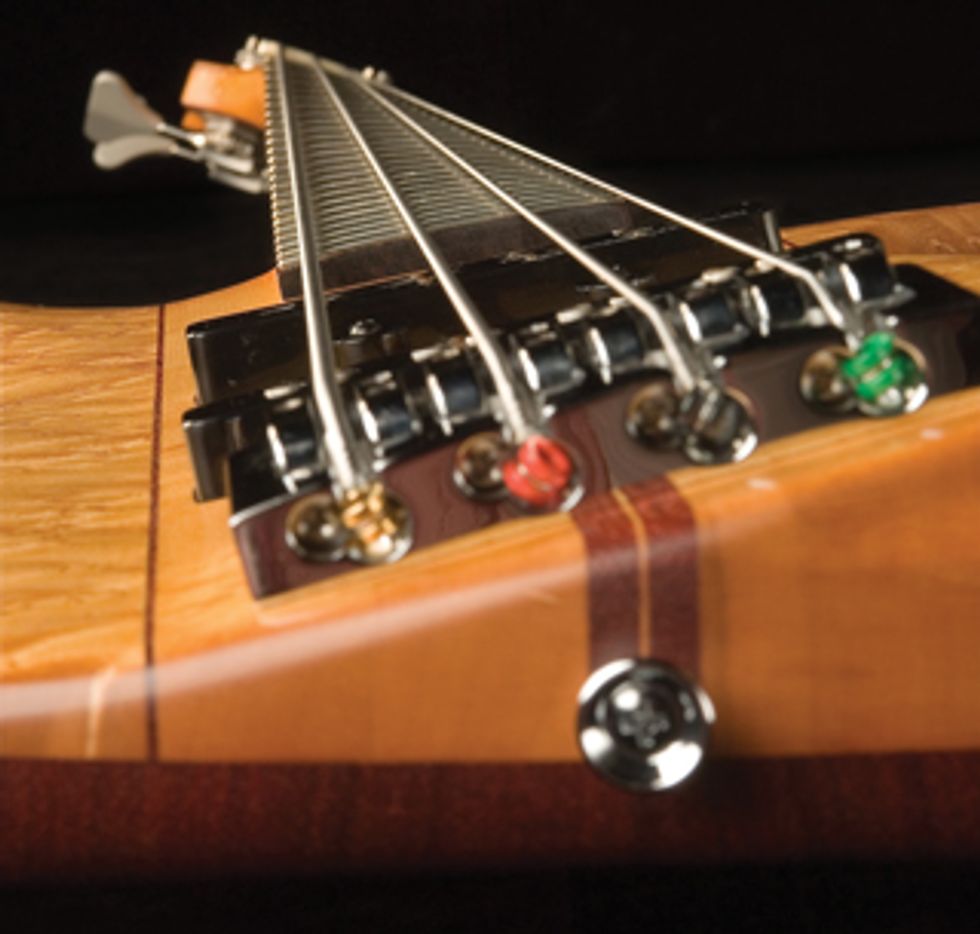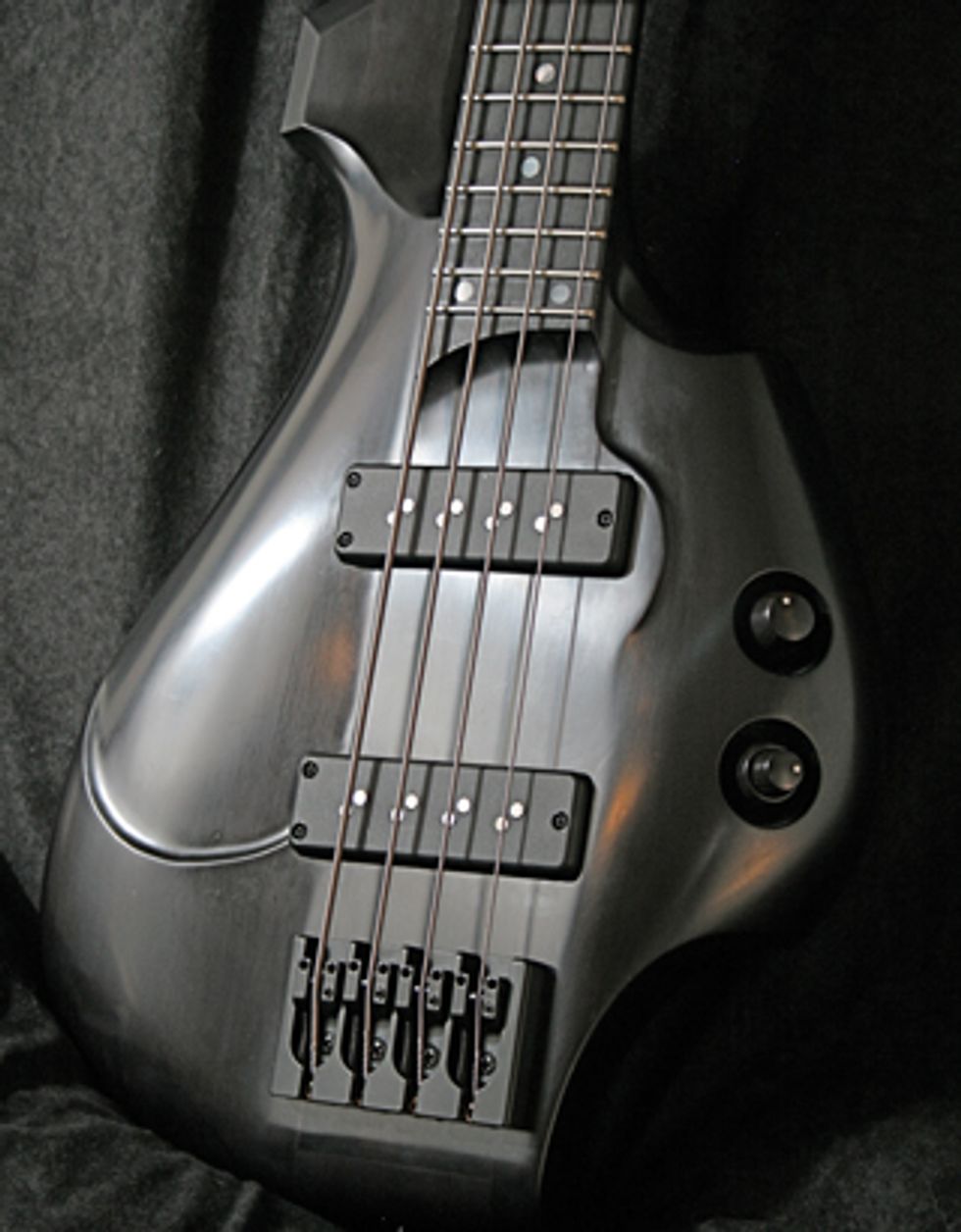
Fig. 1: Basses from Little Guitar Works feature a Natural Twist neck. Photo by Brenda Ladd

Fig. 2: A sculpted body from Little Guitar Works. Photo by Brenda Ladd
Not only is the body by far the biggest part of a bass, it’s the instigator of endless discussions and even more myths. Starting with the classic P-bass shape finished in either sunburst or solid colors, almost anything you can imagine exists in today’s bass marketplace. This includes transparent, translucent, and opaque colors, as well as those AAA++ top woods offered by many boutique basses.
And when it comes to an instrument being qualified for a style of music, it’s odd how the body’s shape and color can delude us. A sunburst P bass might represent blues or R&B, but make the body pink and you’ll be classified as a ’70s funkateer. Change the shape to a V or any other pointy style and audiences will expect to hear some metal. In the end, this is all about fashion and cultural trends, and rarely anything else.
The best evidence that the shape of a solidbody has nothing to do with tone? Even the most hype-oriented people in our pretty talkative industry are not claiming that it does. Admittedly, it’s rather unscientific proof, and it’s quite possible these marketing folks are too busy talking about the specific tone of different woods, or debating if trees should be cut down during a full moon, or if hardshell cases should sport spiracles so wax and oil finishes can breathe freely.
Seriously, a bass body is first and foremost a structural element that keeps all the instrument’s parts in place. Whether the body material exerts any tonal influence on a solidbody is at the center of numerous debates. Many of these end up as rather esoteric arguments about resonance or waves travelling through our instruments. Where these waves travel—and if they ever come back—is a Pandora’s box too large to be opened in a magazine column.
There certainly are good instruments made from chipboard or laminates. Once again, this isn’t real proof, but thinking you can hear the grain structure and density of a comparably huge and heavy block of wood just by plucking a tiny string—while you have lots of other small parts that directly touch this string—sounds a bit absurd.
And here’s one last bit of populist wisdom to ponder: “A good tonewood is one that resonates and vibrates so well it can be used for an electric solidbody.” Wait, wait— you pluck a string and the body takes this power to resonate and let waves travel through it, instead of letting those expensive pickups do their job?
We’d better get back to a body’s structural function. There are a couple of things we definitely need on a body—a neck pocket, an arm rest, the bridge area, and another area for electronics. Add two points for the strap buttons and you’re almost done with a fully functional body. Their exact positions define the overall balance of the instrument and its ergonomics, but everything else is a matter of taste and fashion. (Some singlecut basses can be an exception, as body and neck may be integrated.)
Shapes can also qualify an instrument for specific playing styles. Think of the different needs of Robert Trujillo’s low-hanging bass and his fingerstyle technique versus Mark King, whose bass almost touches his chin for slap-style playing. Okay, in addition to being a great player, King is a rather small guy, so his chin is always close, but you get the idea: The ultimate ergonomic instrument and body design actually depends on what you are after. There are extensive rules for setting up workplace computer stations, but opinions differ on what makes a bass ergonomic.
Most people discussing ergonomic guitars and basses automatically think of how you hold and play a classical guitar: seated with the neck pointing 45 degrees upward, while the guitar body rests on your left (or sometimes right) leg. While this works as a starting point for most players, it’s worth looking into some alternative concepts.
Take the instrument in Fig. 1, for example. It represents another perspective on ergonomics. And how about body sculpting, as illustrated in Fig. 2? Both basses look more radical than they really are, and if you’re willing to dive into the world of 3D-body design, you might find the ride exhilarating.
 Heiko Hoepfinger is a German
physicist and long-time bassist, classical
guitarist, and motorcycle enthusiast. His
work on fuel cells for the European orbital
glider Hermes got him deeply into modern
materials and physical acoustics, and
led him to form BassLab (basslab.de)—a
manufacturer of monocoque guitars and basses. You can
reach him at
chefchen@basslab.de..
Heiko Hoepfinger is a German
physicist and long-time bassist, classical
guitarist, and motorcycle enthusiast. His
work on fuel cells for the European orbital
glider Hermes got him deeply into modern
materials and physical acoustics, and
led him to form BassLab (basslab.de)—a
manufacturer of monocoque guitars and basses. You can
reach him at
chefchen@basslab.de..






![Rig Rundown: AFI [2025]](https://www.premierguitar.com/media-library/youtube.jpg?id=62064741&width=1245&height=700&quality=70&coordinates=0%2C0%2C0%2C0)












 Shop Scott's Rig
Shop Scott's Rig
![Rig Rundown: Russian Circles’ Mike Sullivan [2025]](https://www.premierguitar.com/media-library/youtube.jpg?id=62303631&width=1245&height=700&quality=70&coordinates=0%2C0%2C0%2C0)














































